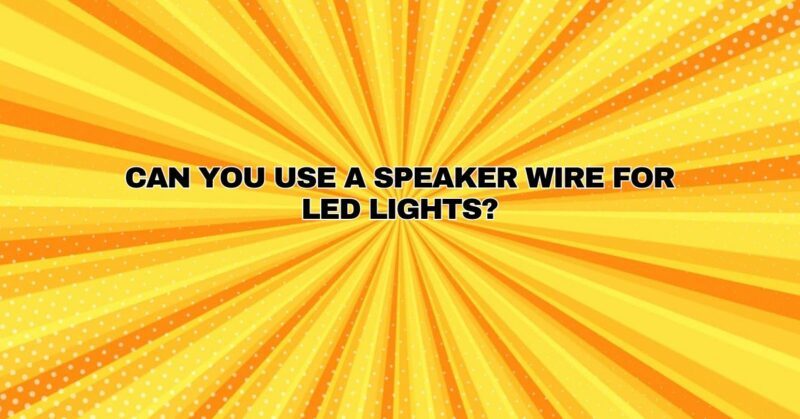The use of speaker wire for LED lights is a common question, especially among DIY enthusiasts and individuals looking for cost-effective wiring solutions. While it might seem like speaker wire could be a convenient alternative for connecting LED lights, it’s essential to understand the differences between the two and the potential challenges that may arise. In this comprehensive guide, we’ll explore the compatibility of speaker wire with LED lights, safety considerations, and the right practices for wiring your LED lighting system.
Understanding Speaker Wire and LED Lights
Before diving into compatibility and usage, let’s clarify what speaker wire and LED lights are and how they typically function:
Speaker Wire:
- Function: Speaker wire is primarily designed for carrying audio signals from an amplifier or receiver to speakers. It is used to transmit low-voltage audio signals.
- Conductors: Speaker wire typically consists of two conductors, often color-coded for positive (red) and negative (black) connections, and is intended for relatively low current.
- Gauge: Speaker wire comes in various gauges (thicknesses), with thicker wires recommended for longer cable runs and high-powered audio systems.
LED Lights:
- Function: Light Emitting Diode (LED) lights are used for illumination and often require a low-voltage, direct current (DC) power source to function.
- Voltage: LED lights typically operate at low voltages, often 12 volts DC or 24 volts DC, depending on the specific type of LED lighting.
- Current: LED lights draw relatively low current compared to other types of lighting, such as incandescent bulbs.
Compatibility of Speaker Wire with LED Lights
While speaker wire and LED lights share some similarities, they are primarily designed for different purposes. Here are the key considerations regarding their compatibility:
- Voltage Compatibility: LED lights typically require a low-voltage DC power source, whereas speaker wire is designed for low-voltage audio signals. In most cases, the voltage used for LED lighting is not compatible with speaker wire.
- Current Handling: LED lights draw relatively low current, but this current may still exceed the capabilities of speaker wire. Speaker wire may not be designed to handle the continuous current required to power LED lights, potentially leading to overheating and safety hazards.
Safety and Code Compliance
Using speaker wire for LED lights may pose safety and code compliance issues:
- Fire Hazard: Inadequate wire gauge or improper wiring can lead to overheating and potential fire hazards, especially if the current exceeds the wire’s capacity.
- Electrical Codes: In many regions, electrical codes and regulations dictate the use of specific types of wiring for different applications. Using speaker wire for LED lights may violate these codes, potentially leading to legal consequences or insurance issues in case of accidents.
Best Practices for Wiring LED Lights
To ensure the safe and efficient installation of LED lights, follow these best practices:
- Use Proper Wiring: Always use wiring specifically designed for low-voltage LED lighting applications. This may include stranded or solid-core copper wires with the appropriate gauge for the current and voltage requirements of your LED lights.
- Follow Manufacturer Guidelines: Consult the manufacturer’s instructions and guidelines for your LED lighting products to ensure you are using the correct wiring methods and connectors.
- Hire a Professional: If you are unsure about wiring LED lights or if your project involves complex electrical work, consider hiring a qualified electrician or lighting specialist to ensure safety and compliance.
Conclusion: Prioritizing Safety and Performance
In conclusion, while it may be tempting to repurpose speaker wire for LED lighting applications, it is not a recommended practice due to voltage and current incompatibilities. The safety and performance of your LED lighting system should be a top priority, and using the right wiring designed for low-voltage DC applications is crucial. By adhering to proper wiring practices and complying with electrical codes, you can ensure a safe and efficient installation of your LED lights, providing both illumination and peace of mind.


